Stats on roadstrike are at record levels in Victoria. Here's how you can help prevent hitting wildlife in your car and what to do if it happens.
Freeway road rules in Victoria: merging, lanes, speed and breakdowns
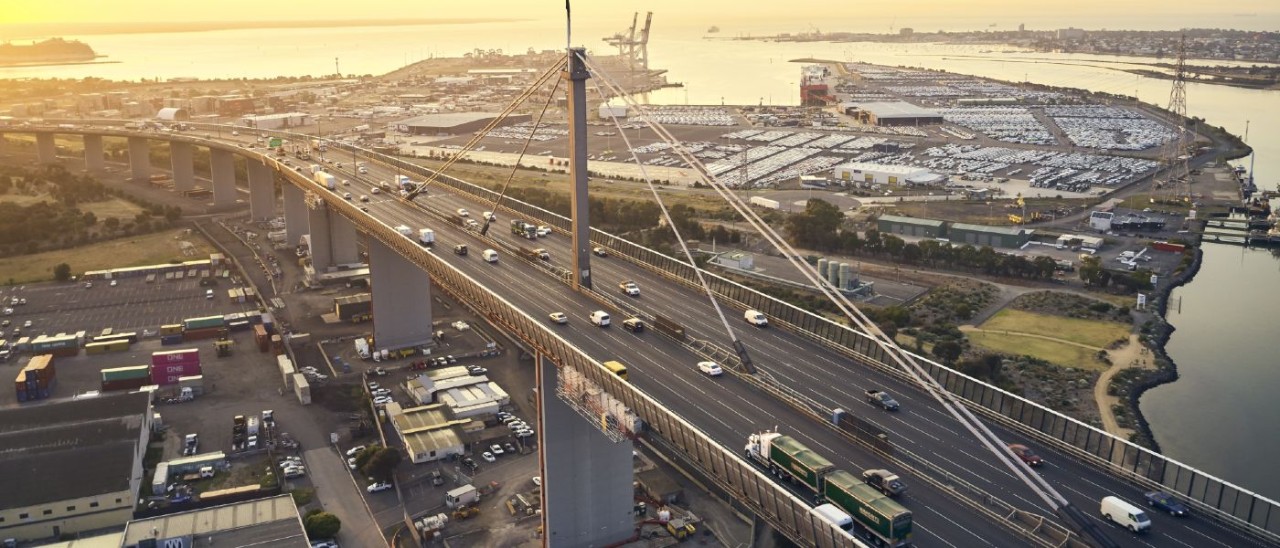
Ever wondered what lane to drive in on a freeway or if you can overtake on the left? Read on to learn the road rules about driving on freeways in Victoria.
Victoria is home to one of the highest density road networks in Australia, with around 200,000km of major and minor roads criss-crossing the state.
While freeways only account for around 1,000km of Victoria’s road network, they play a vital role in helping to transport millions of tonnes of freight, not to mention millions of people, every year.
Freeways are designed for fast, uninterrupted travel from A to B. Because of this, there are a number of road rules concerning their use that are important for all motorists to know.
Can bicycles ride on freeways? Are you allowed to overtake on the left? And what do you do if you break down on the freeway? Discover the answers to some of the most common questions about driving on freeways in Victoria with this guide
In this article
What is a freeway?
In simple terms, freeways are the main roads that connect Victoria. They are designed for lots of traffic travelling at relatively high speeds with no interruptions (such as traffic lights or roundabouts).
Freeways are denoted by the ‘M’ on their route number (for example, the M1 Princes Freeway or M79 Calder Freeway) and provide a high standard of driving conditions including multiple lanes in each direction, divided carriageways, sealed shoulders and lane markings that are visible in all weather conditions. Because of their high standard of driving conditions, freeways are typically the safest roads to travel on.
Most freeways in Victoria are managed by the Department of Transport and Planning (DTP) unless they are privately operated (for example, CityLink) . DTP classifies a road as a freeway if it:
- Provides a principal route for the movement of people and goods between major regions, major population centres, major metropolitan activity centres, major transport terminals or across and around cities
- Is a major route for public transport services
- Has state-wide economic or tourism significance
- Provides necessary connections between arterial roads.
What are the freeways in Melbourne and Victoria?
Victoria is home to the following freeways. Note that some of these freeways are interconnected.
- Princes Freeway
- Monash Freeway
- CityLink (toll road)
- Calder Freeway
- Western Freeway
- West Gate Freeway
- Geelong Ring Road
- The Ring Road (aka the Western Ring Road or Metropolitan Ring Road)
- EastLink (toll road)
- Tullamarine Freeway
- Eastern Freeway
- Frankston Freeway
- Mornington Peninsula Freeway
- Hume Freeway
- Goulburn Valley Freeway
- South Gippsland Freeway.
Is a freeway the same as a highway or a motorway?
Freeways and motorways can largely be considered the same type of road, with their name being the biggest difference.
However, while freeways (or motorways) may be considered highways, highways are not always freeways.
This is because while both highways and freeways serve as major and direct routes between two different locations, highways tend to have capacity for less traffic. They can also contain intersections and traffic lights (for example, the Maroondah Highway that runs through Healesville).
What is a tollway?
A tollway or toll road is a type of road that is maintained and operated by a private company in partnership with the state government. Using a tollway incurs a fee.
In Victoria, there are two tollways: CityLink and EastLink. While both these roads are freeways (in addition to being tollways), a tollway is not always a freeway.
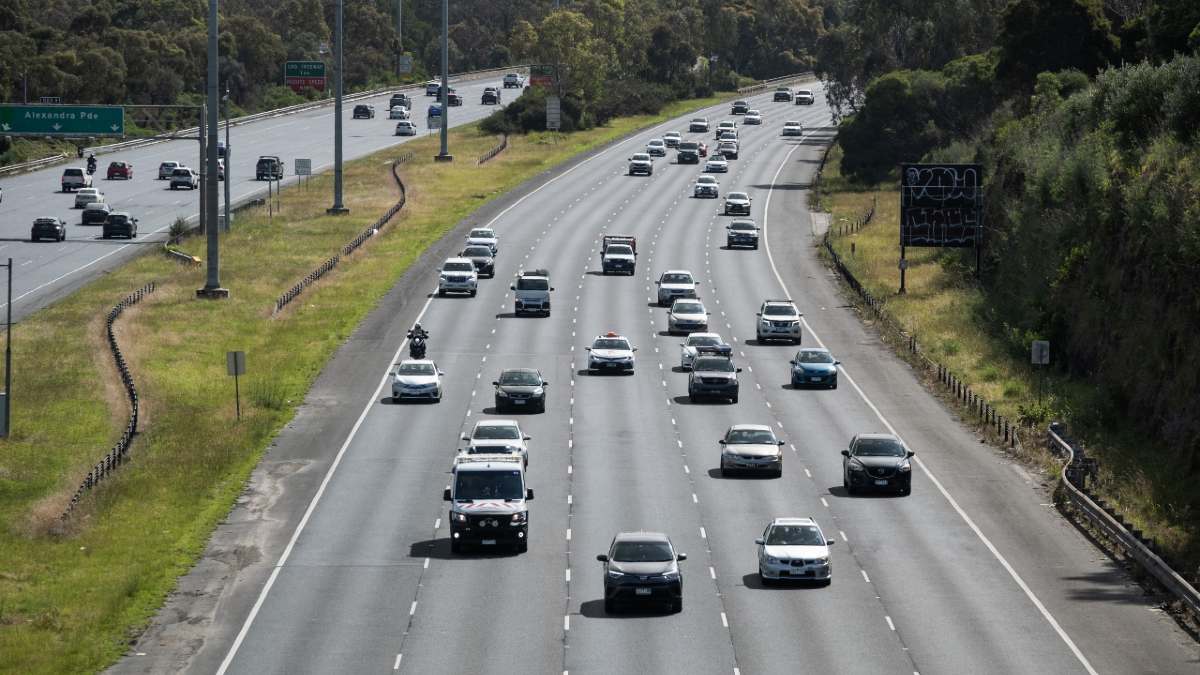
Freeways roads are designed to carry a lot of traffic at high speeds, and are often the safest route. Image: Shannon Morris.
What are the rules for merging onto a freeway?
Freeways have specific entry and exit points, to help maintain a smooth and continuous flow of traffic. Vehicles need to enter the freeway using specially designed lanes called slip lanes or on-ramps.
To safely merge onto a freeway you should:
- Bring your vehicle up to the same speed as the freeway traffic. This may be lower than the freeway’s signposted speed depending on traffic conditions.
- Indicate early to alert other motorists of your intent to merge.
- Find a safe gap in the traffic, check your blind spots (including for motorcyclists), then smoothly merge onto the freeway.
Merging vehicles must give way to traffic already on the freeway. Motorists already travelling on a freeway should stay alert to merging traffic – where safe and practical to do so, it is courteous to slow down or change lanes to allow other vehicles to safely merge.
More: The rules for merging in Victoria.
What are ramp signals?
Where ramp signals exist, you must obey these signals when they are activated, merging onto the freeway one vehicle at a time when you get a green traffic light. Ramp signals control the rate at which vehicles enter the freeway to prevent congestion and maintain a steady flow of traffic.
You can tell if ramp signals have been activated by an illuminated sign that reads ‘RAMP SIGNALS ON’ which is sometimes followed by an illuminated sign reading ‘PREPARE TO STOP’.
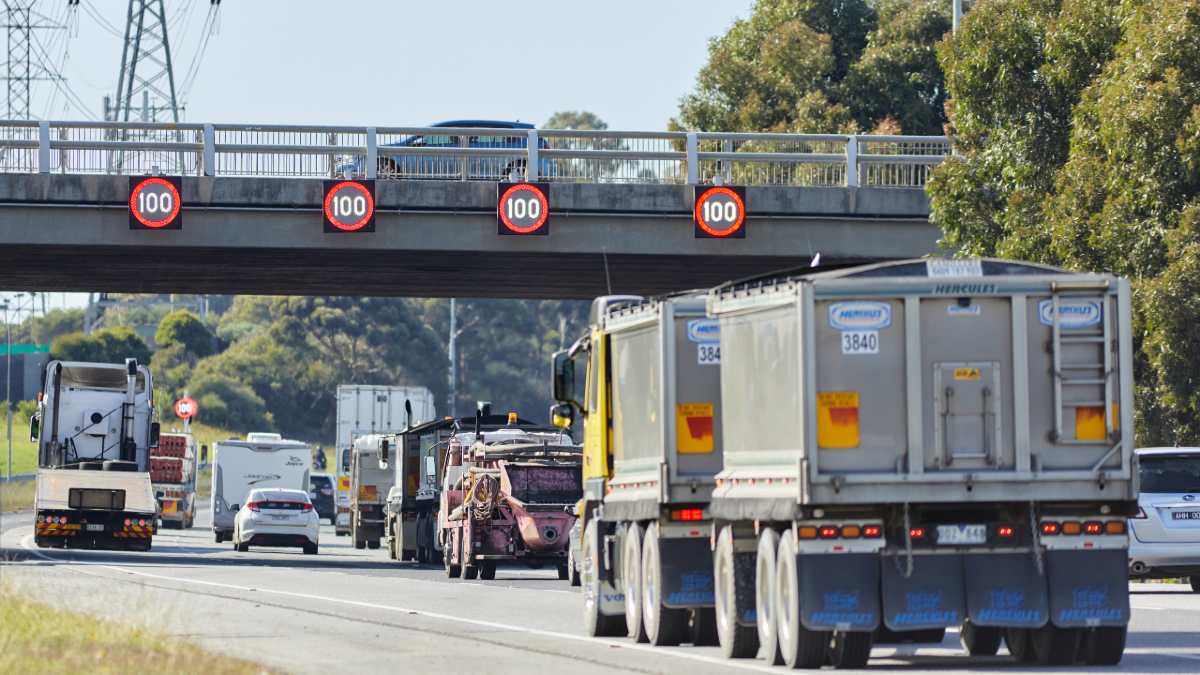
Variable speed limits help manage the flow of traffic on freeways, which can improve road safety. Image: Matt Harvey.
Is there a minimum speed limit when driving on a freeway?
The Victorian Road Safety Road Rules state that a motorist must not unreasonably obstruct another vehicle.
Driving below the signposted speed limit is not considered obstructive unless the driver is driving abnormally slow for the circumstances.
The Victorian Road Rules provides the following scenario as an example of a motorist driving abnormally slow:
A driver driving at a speed of 20 kilometres per hour on a length of road to which a speed limit of 80 kilometres per hour applies when there is no reason for the driver to drive at that speed on the length of road.
What are variable speed limits?
Some freeways have variable speed limits. Like ramp signals, these speed limits are designed to help manage traffic flow and capacity, which can in turn improve road safety.
Variable speed limit signs are similar to the standard, static speed limit signs except that they are electronic and illuminated, allowing them to have their displayed speed limit changed depending on traffic conditions. These signs may be mounted either above the road or on the side of the road. Motorists must not exceed the speed posted on a variable speed limit sign.
Can I ride my bike on a freeway?
Bike riders (including e-bike riders and also e-scooters) cannot cycle on urban freeways in Victoria. Bike riders and e-bike riders can, however, cycle in the shoulder in some parts of the following rural freeways:
- Western Freeway
- Goulburn Valley Freeway
- Hume Freeway
- Calder Freeway
- Princes Highway West
- Princes Freeway East
On rural freeways where cycling is permitted on the shoulder, motorists should stay alert to bike riders crossing at freeway entry points.
Cyclists can find out the fastest or quietest route using the Arevo app. Often there are safer routes that include bike trails.
More: The must-know road rules for all bike riders in Victoria
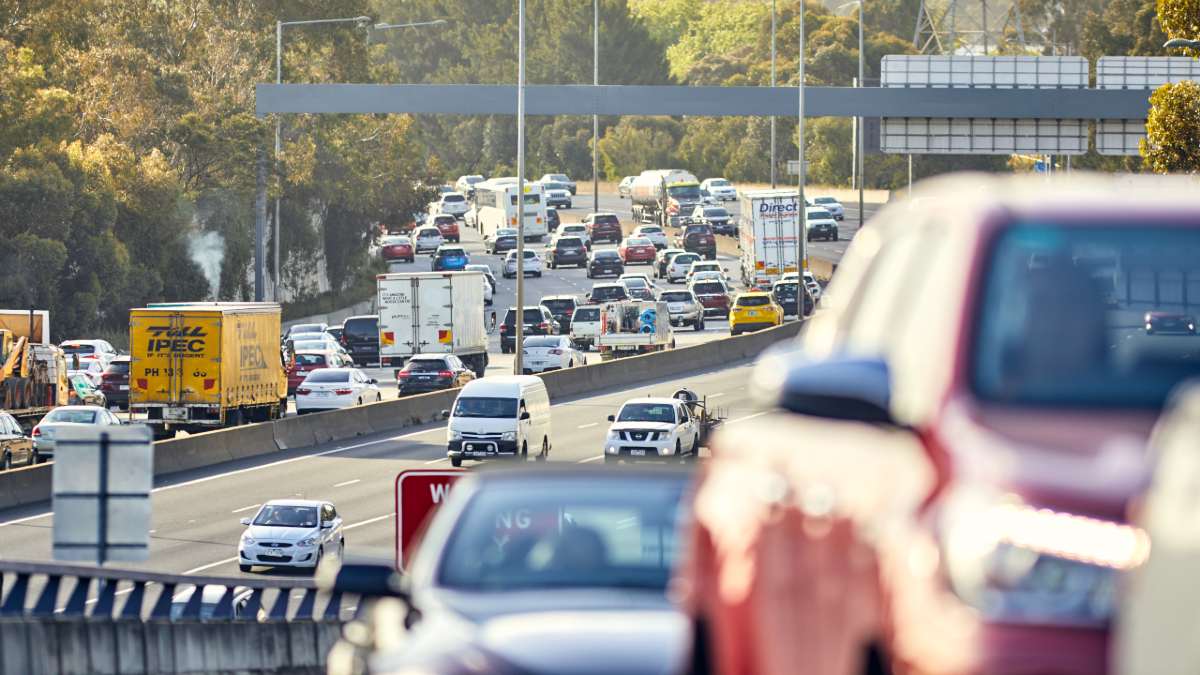
Motorists must stay out of the right lane on freeways with a signposted speed of 80km or more. Image: Matt Harvey.
Can I travel in any lane on a freeway? Do I have to keep to the left?
In Victoria, motorists travelling on a road with a signposted speed limit over 80km (or on any road with a ‘Keep left unless overtaking sign’) must keep out of the right lane unless:
- All lanes are congested
- You are overtaking or turning right
- You are avoiding an obstruction.
Can I travel in a freeway lane with a red X sign above it?
Motorists must obey all overhead traffic control signs on freeways, including land control devices and signage.
You must not drive in a marked lane with an overhead illuminated red diagonal cross or a traffic sign displaying a red diagonal cross. If you are driving in a marked lane with an illuminated red diagonal cross that is flashing, you must leave the marked lane as soon as it is safe to do so.
What are the rules for overtaking on a freeway?
You must only overtake when it is safe to do so, ensuring you indicate when overtaking and when returning to your original lane. You cannot exceed the speed limit while overtaking. Likewise if you are a vehicle being overtaken, you must not increase your speed.
When overtaking you must not return to the original lane from which you were travelling until you are a sufficient distance past the vehicle you have overtaken. You must be a sufficient distance from this vehicle to avoid a collision or an obstruction to the path the overtaken vehicle is travelling. This is especially important when overtaking trucks.
More: What to do if you have a minor collision.
Can I overtake on the left on a freeway?
Roads that have two or more lanes going in each direction, such as a freeway, permit overtaking in the left lane so long as there are no traffic control signs or road markings prohibiting the manoeuvre (for example, do not overtake where there are unbroken lines). Motorists still must only overtake if safe to do so and cannot leave the sealed part of the road to overtake.
Can you speed to overtake a vehicle on a freeway?
The Victorian Road Safety Road Rules do not allow motorists to exceed the speed limit to overtake another vehicle.
What do I do if I miss my exit or my exit is blocked on a freeway?
It is illegal to stop on a freeway unless it is an emergency. Queuing for a freeway exit ramp is considered stopping and is therefore prohibited. You can only stop in an emergency lane in an emergency. You cannot stop in an emergency lane to queue for a freeway exit.
If you miss or cannot safely take a specific freeway exit, simply take the next available exit instead. Often you will be able to detour and still reach your destination. Do not drive in an unsafe manner to take a specific exit. Miss the exit if you cannot take it safely and take the next one. Never do a U-turn on a freeway.
Do not stop on a freeway to look up directions – first exit the freeway before pulling over where safe to do so, parking your vehicle and turning off ignition before accessing a map.
More: The rules about using your mobile phone while driving in Victoria.
Can I use the transit lane on a freeway?
Maybe. Transit lanes with a ‘T2’ road marking can be used by motorists with two people in the vehicle; lanes with a ‘T3’ marking must have three (or more) people in the car to be used.
Transit lanes can also be used by public buses and minibuses, motorcyclists and taxis. Motorists needing to use the transit lane to make a turn can travel in the lane for up to 100m.
Some lanes only operate as transit lanes at certain times. Signage will specify where and when this exists.
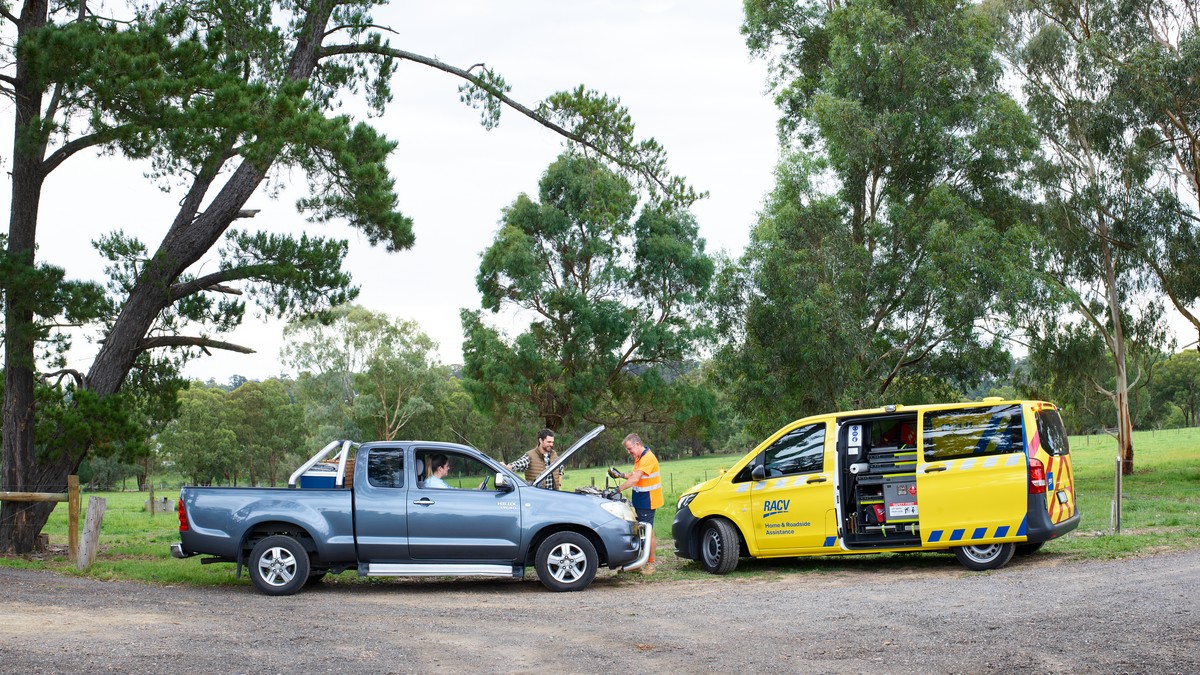
If you breakdown on a freeway it's important to find somewhere safe before calling for roadside assitance.
Can I stop on a freeway?
You cannot stop on a freeway unless it is an emergency. In case of an emergency, stop in the emergency lane.
What do I do if my car breaks down on a freeway?
If you break down on a freeway, don’t panic. Put your hazard lights on and move into the closest emergency lane, keeping the road clear for other motorists.
Avoid stopping on a corner wherever possible. Either pull over before a bend or, if your vehicle begins to fail on a corner, use the vehicle’s momentum to move ahead of the corner.
Once your vehicle is parked turn off the ignition but keep your hazard lights on. If your vehicle is a safe distance from traffic, stay in your vehicle with your seatbelt on and call your roadside assistance provider, such as RACV Emergency Roadside Assistance.
If your vehicle is in a dangerous position close to traffic, exit through the passenger door (so that the car is between you and traffic) and stand as far from the road as possible before calling for assistance. In the instance your closest emergency lane is located on the right-hand side of the road, exit through the driver-side door to keep your vehicle between you and traffic.
If your car breaks down in the middle of traffic on a freeway and you are unable to move it off the road, put your hazard lights on and call VicRoads’ Incident Response Service on 131 170 for immediate help. Do not exit your vehicle.
More: What to do if your car breaks down while driving.
What do I do if there’s an emergency vehicle on the freeway?
You must give way to an emergency or enforcement vehicle travelling on a freeway (or any other road) if it is using its sirens and/or flashing lights.
You must also slow down to 40km/h when passing an emergency, roadside assistance, or incident response vehicle with flashing lights and/or sirens that is stationary or moving slower than 10km/h.
Rules for driving safely around trucks on a freeway
Heavy vehicles, including trucks, must follow the same road rules as all other motorists when driving in Victoria.
There are some additional rules for trucks when driving on freeways. Some freeways prohibit trucks over 4.5 tonnes from travelling in the right lane (traffic signs indicate where this is enforced) and trucks are prohibited from travelling over 100km/h anywhere in Victoria.
Motorists driving with trucks (as well as trucks themselves) should be mindful to keep a safe following distance. This distance must be of sufficient length so that the driver can, if necessary, stop safely to avoid a collision with the vehicle in front.
Remember that if you can’t see the truck’s mirrors, then the truck driver can’t see you. When overtaking, only merge back into the truck’s lane if there is a safe amount of distance between you and the truck, being mindful that a truck can take longer to stop than a smaller vehicle. Waiting until you can see the entire truck in your left wing mirror can help you gauge if you are a safe distance to merge back into the lane.
High beams should be dimmed when 200m or closer to a truck, regardless of whether they are travelling in the same or opposite direction to you. While this rule applies to all vehicles, it is especially important when driving with trucks as their mirrors are large and typically do not have anti-glare positions.
Motorists are also not allowed to overtake trucks that are turning if they are displaying a “Do not overtake turning vehicle” sign.


